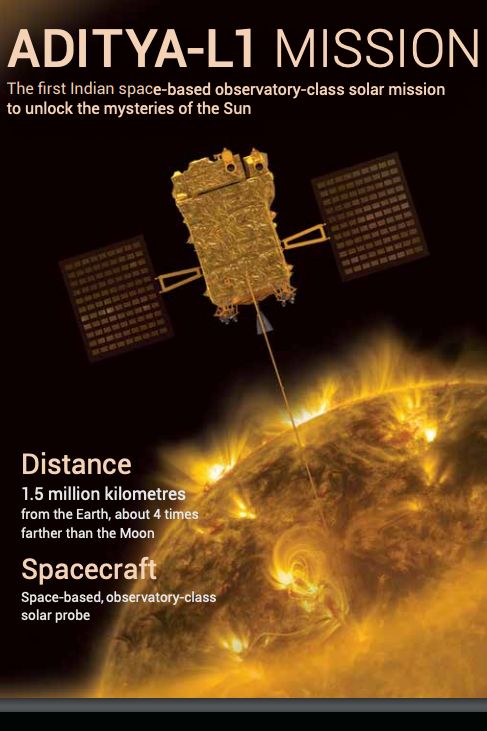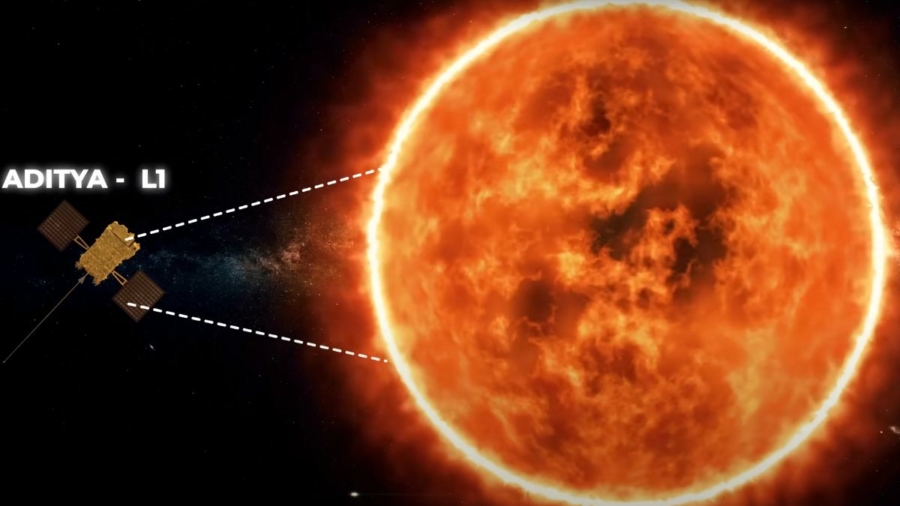India has achieved many heights in space exploration in the last several years, creating a new history by placing ISRO’s Aditya-L1 in a halo orbit. ISRO has successfully launched many of its projects and another new name has been added to this series which has been launched for the study of the Sun. ISRO’s Aditya-L1 mission has been successfully placed in the halo orbit around the Lagrangian point (L1). In this blog post, we will get complete information about ISRO’s Aditya-L1 mission like when it was launched, where it was placed, and what it will study.
Table of Contents
- Background of Aditya-L1 Mission
- Objectives of ISRO’S Aditya-L1 Mission
- Advantages of Lagrangian Point-L1
- Launching Date
- Journey Phases
- Scientific Payloads on Aditya-L1
- Summary: ISRO’s Aditya-L1 Mission
Background of Aditya-L1 Mission
ISRO launched ISRO’s Aditya-L1 mission to study the activity of the Sun, the first such mission launched by India. Aditya-L1 was successfully placed in the halo orbit around the Lagrangian point-L1, which is considered a major achievement in the field of science. According to ISRO‘s two-body gravitational system, the Lagrangian point is the area where the gravitational force of both the Sun and the Earth is present and both the gravitational forces negate the effect of each other due to which a neutral area is created in this area.
If a spacecraft reaches this area, the fuel consumption here is greatly reduced and the spacecraft also remains stable. In this way, five Lagrangian points have been defined in this area, whose names are L1, L2, L3, L4, and L5. In which the Lagrangian point-L1 is 1.5 million kilometers away from the Earth, which is approximately 1% of the distance between the Sun and the Moon.
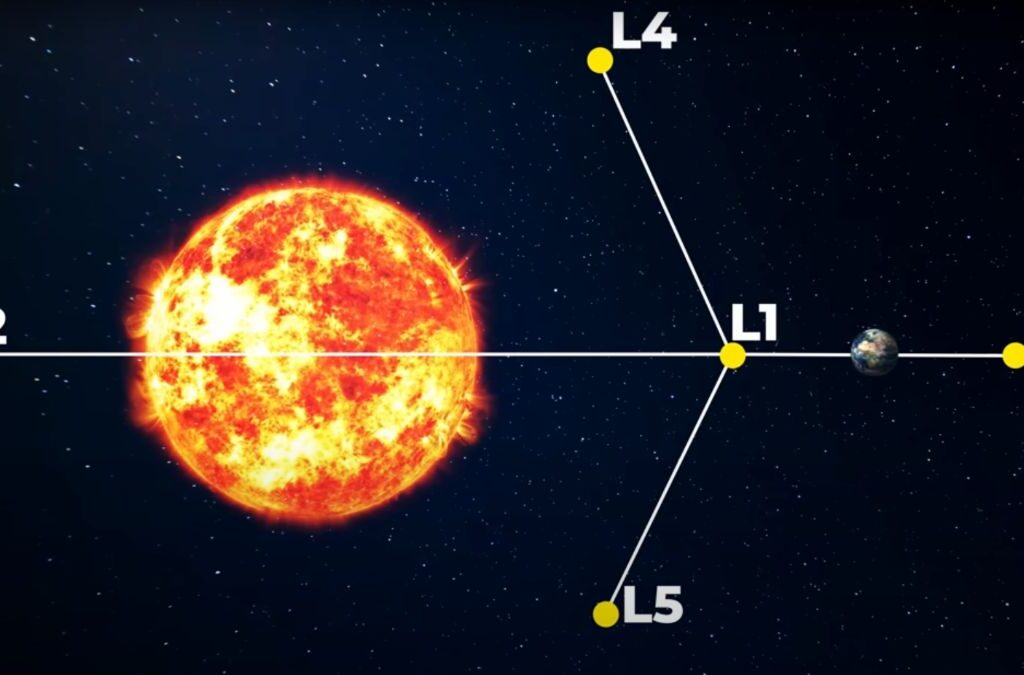
Objectives of ISRO’S Aditya-L1 Mission
Advantages of Lagrangian Point-L1
The biggest advantage of Lagrangian point-L1 is that there is no eclipse and occultation at this point, in which Aditya L1 will be able to continuously observe the activity taking place in the Sun 24*7, which is expected to give a better observation result.
Launching Date
ISRO’s Aditya-L1 in a halo orbit mission was launched on 2 September 2023 from the second launch pad of Satish Dhawan Space Centre, Sriharikota. ISRO’s Aditya-L1 mission was successfully placed in the halo orbit of Lagrangian point L1 on 6 January 2024, completing a challenging journey of 127 days.
It has traveled a distance of approximately 1.5 million kilometers from the Earth. It has been placed in a halo orbit around the Lagrangian point L1 by firing maneuvers conducted by the ISRO Telemetry Tracking and Command Network (ISTRAC) from the Bangalore Center of ISRO scientists and engineers.
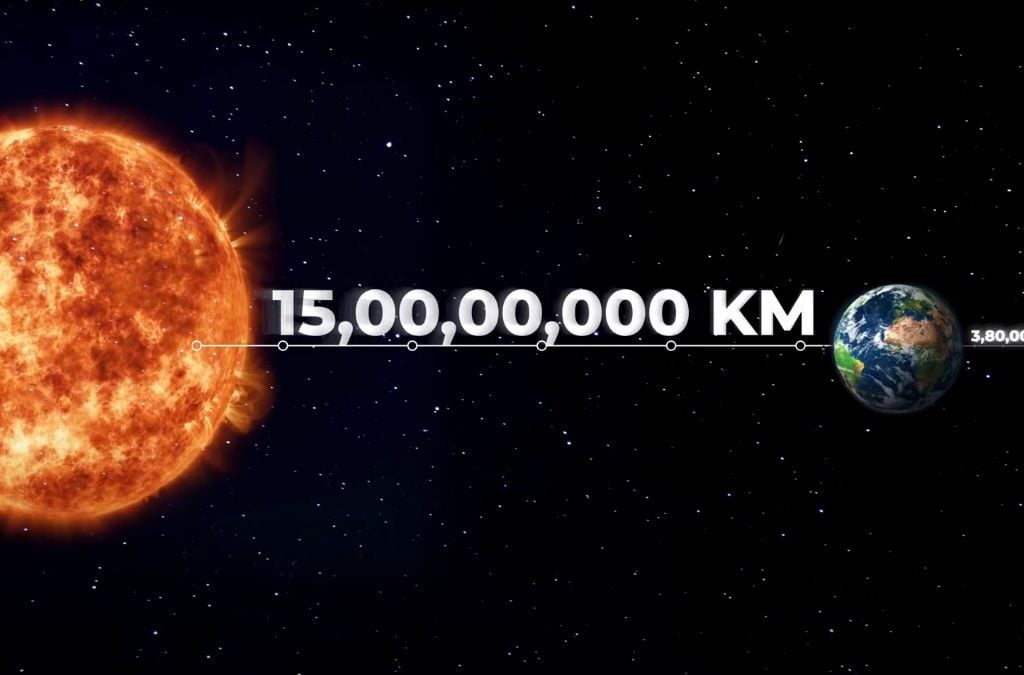
Journey Phases
Aditya-L1 Several steps were used to reach the Lagrangian point L1.
In the first phase, Aditya-L1 was launched from Satish Dhawan Space Center on an elliptical path around the Earth’s orbit at a distance of 235*19500 kilometers.
After this, a successful attempt was made by the ISRO Telemetry Tracking and Command Network (ISTRAC) to establish it in Earth’s orbit in four phases.
In the first phase, the spacecraft was placed in an orbit of 245 * 22,459 kilometers on 03 September 2023.
In the second stage, on 5 September’2023, the spacecraft was placed in an orbit of 282*40,225 kilometers.
The third stage was placed in an orbit of 71,767 km on 10 September’2023 296*
In the fourth stage, on September 15, 2023, the spacecraft was placed in an area of 256*1,21,973 km.
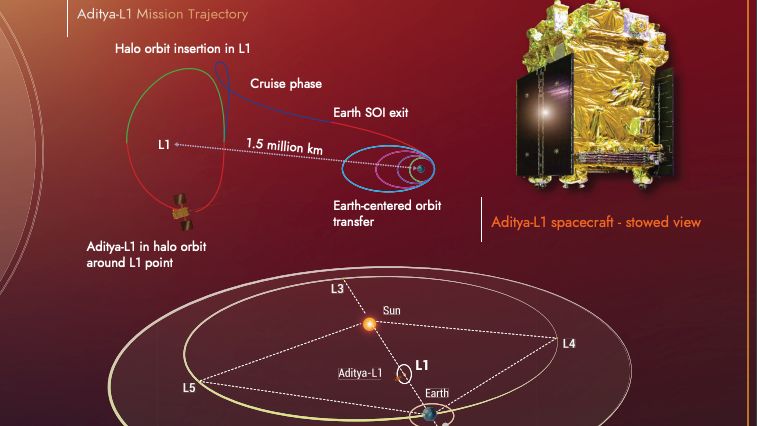
Scientific Payloads on Aditya-L1
Aditya-L1 carries a total of seven payloads. These payloads will study many parts of the Sun with the help of electromagnetic radiation and particle detectors, which mainly include the study of the photosphere, chromosphere, and the outermost layer (corona) of the Sun. Four payloads will directly acquire information about the Sun at the Lagrangian point L1 and will focus only on the Sun. The remaining three payloads will conduct in-situ studies of particles and fields at the L1 and surrounding areas.

ISRO’s Aditya-L1 has been sent in a halo orbit for 5 years.
Summary: ISRO’s Aditya-L1 Mission
